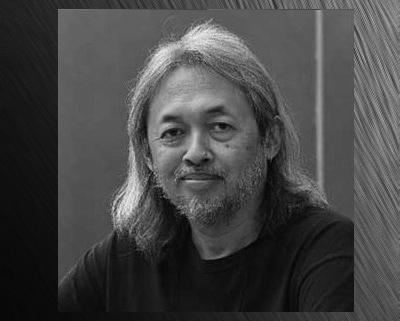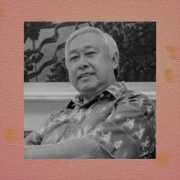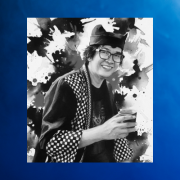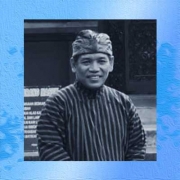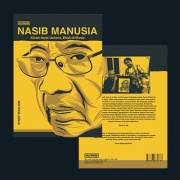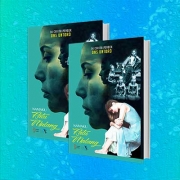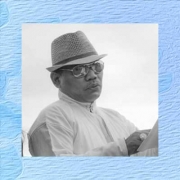(Part II) In The Mood for Urban Culture : The Romance Comics of Jan Mintaraga
Oleh Seno Gumira Ajidarma
The short version of this paper first published as proceedings from 2nd International Conference on Strategic and Global Studies (ICSGS 2018); part of publications in Advances in Social Science, Education and Humanities Research. Publication Date: November 2019. DOI https://doi.org/10.2991/icsgs-18.2019.10.
Editorial assistance for this long version was provided by Jennifer Lindsay. Published for the first time in borobudurwriters.id. The Indonesian language version, with much more research materials will be published in hard copy later.
Abstract:
The art of comic narrative lies in the combination of pictures and words. The romance comics that Jan Mintaraga (1942-1999) wrote and published from 1966-1971 in the early years of the New Order, reveal the hegemonic process of Jakarta becoming the representation of urban culture. The determination of power and ideological struggles formed the setting, plots, and lifestyle of urban culture in the making. Taking thirty-eight Mintaraga comic titles as source material to investigate social, economic, and political discourse, I find that the dialectic between the dreams and reality of the past can be useful for a consideration of urban life today. The experimental culture experienced at that period, including the role of niche-markets, is returning at the start of the digital age.
Keywords: Urban culture, hegemony, ideological struggle.
PART II
16. Prince of Dreams (Pangeran Impian) (64/1968)
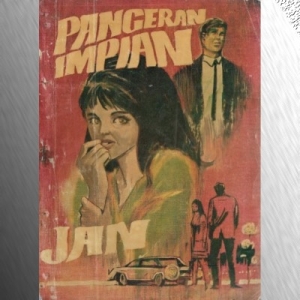 In a correspondence club, Katty, a secretary who has never had a boyfriend, builds a relationship by letters with Chris from another city, her counterpart who she has never met. Meanwhile, a new young boss named Abimanyu arrives and becomes the favorite of all the young women employees at the office. Apparently, even as Katty tries hard to be faithful to her correspondence boyfriend, Katty and Abimanyu become closer to each other, until Abimanyu decides to break it up, because he has to be faithful to someone else. In the end, it turns out that Abimanyu is the same person as Chris. H
In a correspondence club, Katty, a secretary who has never had a boyfriend, builds a relationship by letters with Chris from another city, her counterpart who she has never met. Meanwhile, a new young boss named Abimanyu arrives and becomes the favorite of all the young women employees at the office. Apparently, even as Katty tries hard to be faithful to her correspondence boyfriend, Katty and Abimanyu become closer to each other, until Abimanyu decides to break it up, because he has to be faithful to someone else. In the end, it turns out that Abimanyu is the same person as Chris. H
Sets: Office and private places like Katty’s room, where Katty writes her letters, and thinks about the man behind the letters that she receives. Only one view of outdoors scenery, one panel even from the interior, is related to the story that is about letters between two people in the same office. Obviously an urban matter of the time.
Story-enablers: Every woman has a boyfriend, but Katty is not interested, until she finds the correspondence forum, where she likes to communicate. This background is like a flashback that enables Abimanyu in the office to be contested by Chris in the letters.
Theme-markers: When Katty really feels in love with Abimanyu, she feels guilty about Chris, to whom she is faithful. As she does not know the truth the tension is escalated.
Emotional-foci: Katty is ready to lose Abimanyu when it appears that Chris in the letters is Abimanyu in the office, and what is expected to be a sad separation becomes a surprise ending with happiness.
Signification: A correspondence club is one of the systematical-unnatural ways to find a match. In short, an urban practical-pragmatic way, which in this title is unchallenged, even creates an ideology of faithfulness, which determines the plot.
17. Affair Lembah Tali-Putri (The Tali-Putri Valley Affair) (64/1968)
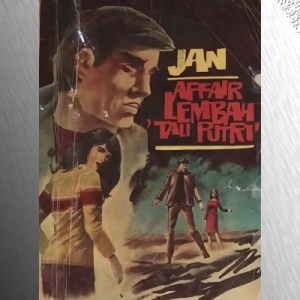 Gita comes back from her study at the fine art school in the big city, to her parent’s house in Tali-Putri Valley, where they own a plantation. From their first meeting, Gita is attracted to Karnadi, her father’s driver. This driver is attractive and heroic, so that he has enemies among the employees. Knowing this, even though her father declares they are a modern family, to marry a driver who is one of the employees is still a blow to him. Anyhow, Karnadi says to Gita, that even though Gita is the finest woman, their relationship is not possible from the social point of view. However, when Gita’s father asks Karnadi why he want to leave the plantation, Karnadi informs him that he is Ina’s son. Ina was Gita’s father’s girl friend 25 years ago, but their union was obstructed by their differences in social status. Ina was already pregnant when they separated, but Gita never knew this. When Karnadi goes away, Gita still thinks it’s their social status which separates them. UH
Gita comes back from her study at the fine art school in the big city, to her parent’s house in Tali-Putri Valley, where they own a plantation. From their first meeting, Gita is attracted to Karnadi, her father’s driver. This driver is attractive and heroic, so that he has enemies among the employees. Knowing this, even though her father declares they are a modern family, to marry a driver who is one of the employees is still a blow to him. Anyhow, Karnadi says to Gita, that even though Gita is the finest woman, their relationship is not possible from the social point of view. However, when Gita’s father asks Karnadi why he want to leave the plantation, Karnadi informs him that he is Ina’s son. Ina was Gita’s father’s girl friend 25 years ago, but their union was obstructed by their differences in social status. Ina was already pregnant when they separated, but Gita never knew this. When Karnadi goes away, Gita still thinks it’s their social status which separates them. UH
Sets: There is no plantation in the picture, but the drama is played far away from the city, with scenery that becomes the setting for landscape painting activity. This countryside is opposite to the big city, but holds the urban spirit as the house is architecturally modern, and Gita’s style of fashion is the latest style.
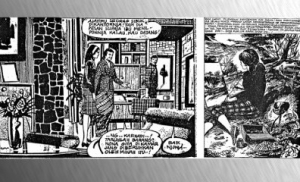
This countryside is opposite to the big city, but holds the urban spirit as the house is architecturally modern.
Story-enablers: The flashback, that Karnadi is Ina’s son, comes late, but contributes enough to make the whole thing dramatic.
Theme-markers: As Gita until the end of the story does not know that Karnadi is her step-brother, her expectation of Karnadi’s mutual reply becomes a real tension.
Emotional-foci: On the moment of Karnadi’s departure, while Gita’s sorrow happens because she does not know anything about her father’s relation with Ina; her father should be more miserable, because he knows the truth and knows that Karyadi is the kind of son he expected. The thoughts in Karnadi’s balloon, that he will never come back, for good, despite the layers of Gita’s and her father’s expectation is an emotionally escalated finale.
Signification: In the countryside where Gita gets to know Karnadi, and when Karnadi leaves, feel like a place that is not part of the world, while actually it is, and even part of urban culture. Mentioned as a plantation, the values discussed are part of an urban process that tries to leave the traditional-feudal thinking behind, but tradition never leaves them. The country is not the rural-agrarian social space anymore; the clothes, the gestures, the attitude, and the language of the employees also not agrarian behavior, but even the values of the employers are not yet fully part of the urban city. Karnadi in this cultural typology is the marginal one, the one who passes over the polemic but is also at once the product and victim of ideological conflict in the urban process.
18. Roda (Wheels) (162/1969)
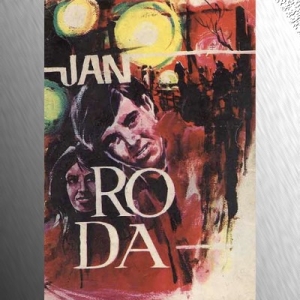 This is a story of racers in the life and death world of professional racing, and their relationships with their girlfriends. Actually, this is an adaptation of the movie Red Line 7000 (Howard Hawks, 1965). The three main racers are Alex, a first class racer who leads Jossi’s racing club; Batara, an international racer who is a champion in Macau and Johor; and Herry, the talented ne comer from the street who is still wild. The girls are Umi, Jossi’s sister who falls in love with Herry, but is disappointed by Herry’s social life with all the girls; Vera, whose racer boyfriends always die on the circuit, and who is now with Batara; Sandra, dumped by Batara and finds Alex, who tries to kill Batara because of jealousy. At the end, Alex asks Batara to forgive him, and Herry comes back to Umi after having an accident that broke his hand. H
This is a story of racers in the life and death world of professional racing, and their relationships with their girlfriends. Actually, this is an adaptation of the movie Red Line 7000 (Howard Hawks, 1965). The three main racers are Alex, a first class racer who leads Jossi’s racing club; Batara, an international racer who is a champion in Macau and Johor; and Herry, the talented ne comer from the street who is still wild. The girls are Umi, Jossi’s sister who falls in love with Herry, but is disappointed by Herry’s social life with all the girls; Vera, whose racer boyfriends always die on the circuit, and who is now with Batara; Sandra, dumped by Batara and finds Alex, who tries to kill Batara because of jealousy. At the end, Alex asks Batara to forgive him, and Herry comes back to Umi after having an accident that broke his hand. H
Sets: The world of racing is now the setting of urban culture, so there are circuits, racing motorcycles, and special youth centers for the racing community where they dine and dance with pop decorations on the wall. Pop music is depicted by the action of the band, records, and posters. Superheroes from comic books like Spiderman and Batman are part of the design, while the houses with Jengki-architecture and Retro interior design establish the spirit that everything should be modern. Trademark signs signify an urban environment in the circuit and the business district. Walking on empty streets surrounded by luxurious houses or sitting at a park in panoramic destinations are like a hegemonic scenery over anything not pictured here.
Story-enablers: The flashbacks of Vera’s former boyfriends racers who died, and the family background of Herry as a family of civil servants that could not survive poverty, are all given in words, but this is enough to give a perspective of the world as a competition of life and death. On the other hand, there is also competition to find love and happiness, that is always threatened in urban culture. The enabler scene is the information aboutthe number one race that puts Alex, Batara, and Herry in the same competition as rivals.
Theme-markers: The complicated situation that Barata is attracted to Vera, and Alex to Sandra, who Batara has just left, escalates the tension, while the relationship of Herry and Umi already over.
Emotional-foci: It happens when Alex intentionally brushes against Batara’s motorcycle which flies out of the circuit. The scenes that follow, until Alex comes to apologize that end up with Batara hitting Alex, still flow with highest drama.
Signification: The dominant group here are young people, as this is the racing world, signifying the fierce competition of the urban city, that the new paved streets and imported motorcycles create the noise in the night outside the circuit. Even as an adaptation from a film, this title clearly represents the spirit of a developing urban culture, where internal love relationships struggle to find their place.
19. Tonil (The Stage) (144/1969)
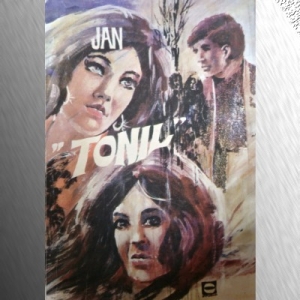 Nicko, as he confesses, is a young man who had an ongoing relationship with a much older woman . Among his peers this is viewed as something morally not right, as though Nicko is a male prostitute, and Nicko feels the same way. However, he also has a relationship with Helen, which is not allowed by her family, especially her brother, Rustam, who adds another reason, namely that Nicko is not of the same aristocratic blood. With all these obstacles, after a fight Nicko breaks off his relationship with Helen, even though she asks him to take her away as a runaway bride. In her anger, Helen changes into his enemy, even though paradoxically they still love each other, with open conflict that drowns Nicko in melancholic sorrow. Along comes Yani, Helen’s niece, into his life, and nobody knows if the same old story will repeat again, or not … As the world is a stage, it is just a new chapter for another play. UH
Nicko, as he confesses, is a young man who had an ongoing relationship with a much older woman . Among his peers this is viewed as something morally not right, as though Nicko is a male prostitute, and Nicko feels the same way. However, he also has a relationship with Helen, which is not allowed by her family, especially her brother, Rustam, who adds another reason, namely that Nicko is not of the same aristocratic blood. With all these obstacles, after a fight Nicko breaks off his relationship with Helen, even though she asks him to take her away as a runaway bride. In her anger, Helen changes into his enemy, even though paradoxically they still love each other, with open conflict that drowns Nicko in melancholic sorrow. Along comes Yani, Helen’s niece, into his life, and nobody knows if the same old story will repeat again, or not … As the world is a stage, it is just a new chapter for another play. UH
Sets: Nicko is a guitarist and a singer, Helen is a dancer, the two belong to the student organization of performance in their campus, which needs obvious surroundings like theater buildings and the campus itself, but in this title there is a special historical occasion: a bullfight at Senayan stadium. For the rest, houses, interiors, with modern touch, but now the country outdoor scenery is more dominant, as Nicko has to sing sad songs with his guitar in open panoramic scenery. The melancholic mood is facilitated by empty spaces in the country, whereas the urban city is not the place for the sentimental loner.
Story-enablers: The flashback is from the dialogue, and the enablers are the doubtful Nicko, as can be read in his mind-balloon, in conflict with the eager Helen who asks Nicko to take her away.
Theme-markers: The tension escalates as Helen reaches the point of return as Nicko hater. Despite Nicko’s choice to stay silent, Helen’s insults are still in conflict with Nicko’s opinion in the bubble, if not the comment sentences in the comic itself.
Emotional-foci: There is hope of reunion when they talk in the tour show, after being separated for some time. Helen says that Nicko’s arrogance to come back to her does not match with the truth of him, while Nicko says it is Helen who is arrogant with all her insults. The tension still haunts when Nicko meets Helen with an open ending.
Signification: This title softly reveals the dark side of the urban city, not Nicko’s past as the young lover of a much older woman, because nothing is proven, but that the existence of transaction of love for money could be viewed as one of the new values. Meanwhile, the aristocratic attitudes in Rustam’s speech are a reality as well. The discourse of the urban culture is the hegemonic process of the new dominant ideology of practicalities that has to face the negotiation of classical normative values. The result is the alienation of Nicko.
20. Kau Belum Wanita, Flora (You Are Not A Woman Yet, Flora) (161/1969)
 Flora is a teenage girl of 16, the youngest in the family. One day she is in a car drivn by her friend who really likes to speed, especially when racing with another car from a rival gang. Their car nearly hits a man who fortunately jumps before the car hits him. However, one of his legs breaks anyway. Only Flora gives attention to the unfortunate man., She gets out of the car and puts the man in a becak, but at that moment her father sees her and with his car takes the man to the hospital. It turns out that he is a film actor, Farid Pirngadie. Flora’s family only find this out this by the news the following day about his broken leg. Flora, who has been feeling guilty about the accident, visits Farid at the hospital, then at his place, so they became close. In their relationship, Farid tells his life story that he has not married yet because cannot forget Connie, his girlfriend who left him suddenly, actually because of pressure from her parents. Farid, who at the time was known as Farry, was far from an ideal candidate in the parents’ opinion, because his life looked so gloomy. But the broken hearted young man managed to find work where his talent matched. That was his past, but now, their age distance, and the fact that Flora is a minor, means their relationship cannot go further. “You are not a woman yet, Flora,” Farid says to her. Then Flora finds out that Connie is her older sister. When Flora’s parents also find out about this, definitely their relationship cannot go further. After three years, Flora comes back as a mature person. Hardly recognized by Farid, they can renew their relationship, because Flora the girl is now a woman. H
Flora is a teenage girl of 16, the youngest in the family. One day she is in a car drivn by her friend who really likes to speed, especially when racing with another car from a rival gang. Their car nearly hits a man who fortunately jumps before the car hits him. However, one of his legs breaks anyway. Only Flora gives attention to the unfortunate man., She gets out of the car and puts the man in a becak, but at that moment her father sees her and with his car takes the man to the hospital. It turns out that he is a film actor, Farid Pirngadie. Flora’s family only find this out this by the news the following day about his broken leg. Flora, who has been feeling guilty about the accident, visits Farid at the hospital, then at his place, so they became close. In their relationship, Farid tells his life story that he has not married yet because cannot forget Connie, his girlfriend who left him suddenly, actually because of pressure from her parents. Farid, who at the time was known as Farry, was far from an ideal candidate in the parents’ opinion, because his life looked so gloomy. But the broken hearted young man managed to find work where his talent matched. That was his past, but now, their age distance, and the fact that Flora is a minor, means their relationship cannot go further. “You are not a woman yet, Flora,” Farid says to her. Then Flora finds out that Connie is her older sister. When Flora’s parents also find out about this, definitely their relationship cannot go further. After three years, Flora comes back as a mature person. Hardly recognized by Farid, they can renew their relationship, because Flora the girl is now a woman. H
Sets: The streets where the youths race their cars are the set for their urban life, as though it was built only for them, so that when there is any contact with another group, which is the older generation, the different attitude can create an accident—but this is also how Flora and Farid met. Then there are the Jengki houses, the up-to-date modern Indonesian architecture of the time, with modern interior design. This is to show the social class, like the cars and scooters, while if Farid’s house looks a little different, this could be because his part in the story is not to represent the establishment. Dark alleys are still the favorite spots for frustration by the male characters.
Story-enablers: The flashback about Connie gives a background for the moment when Farid shows Flora the portrait of Connie. This gives the plot more obstacles to the relationship that was already difficult by the age factor and maybe social class.
Theme-markers: The motif here is about the age of Flora, who is too young in Farid’s view, and this alone is like a problem that cannot be solved.
Emotional-foci: While actually maturity could be awaited, as though there is still some hope, the fact that Farid is the man unwanted by Flora’s parents seems like the last decision in this case. Flora moves to another city, and Farid tries to heal his feelings with his career. When they meet again, however, time and maturity make the couple survive, and release all the former tension.
Signification: The dominant power of the parents with their establishment ideology could be negotiated, until the couple liberate themselves after the three year postponement. The fashion of clothes follows the spirit moving from adolescence to maturity, as the spirit of love is incorporated by the hegemony of established values that is called success, the urban fetishism.
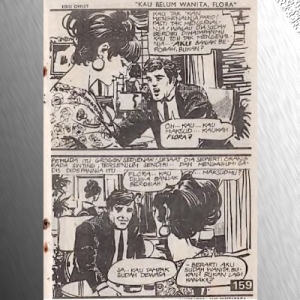
21. Si Djalang (The Wild One) (165/1969)
 Djufri, from a low-class family, is accused of stealing at school. Although actually this is discovered to be a set up, he has already been expelled. Tiwi, the schoolmaster’s daughter, is his girlfriend, until one day she disappears. Rumors say she has married and her rich husband is her father’s age. Without work, for five years Djufri often stares at his former high school. One day he is offered a job as a driver, and he takes it, only to find that his employer is Tiwi’s family. He finds out later that she is not happy, and her only son, Tony, who is in a foster house, is his son. At home, his younger brother, Topo, has a girlfriend called Dorris. It turns out that Dorris is a call-girl who lives in a cheap hotel. Djufri asks Dorris to leave Topo alone, but then Topo disappears with Dorris and nobody knows their whereabouts. This makes Djufri’s parents eject him from the house. Meanwhile, Euis, his neighbor, who has been asked by her parents to marry an old man too, shares her frustration with Djufri. Around this time, the relationship of Djufri and Tiwi results in their expulsion. They move with Tony to Djupri’s aunt house in the slum area. When Djufri cannot find any work, Tiwi thinks of trying her luck as a secretary. They are still arguing about it, when Euis comes asking for help, saying that her step-father hit her after she said that she don’t want to marry the old man chosen to be husband. Djufri comes to Euis’s father and they argue until the father uses a knife that apparently kills himself. Behind iron bars, while waiting for the court process, Djufri listens to Tiwi who once more asks for approval to find work. UH
Djufri, from a low-class family, is accused of stealing at school. Although actually this is discovered to be a set up, he has already been expelled. Tiwi, the schoolmaster’s daughter, is his girlfriend, until one day she disappears. Rumors say she has married and her rich husband is her father’s age. Without work, for five years Djufri often stares at his former high school. One day he is offered a job as a driver, and he takes it, only to find that his employer is Tiwi’s family. He finds out later that she is not happy, and her only son, Tony, who is in a foster house, is his son. At home, his younger brother, Topo, has a girlfriend called Dorris. It turns out that Dorris is a call-girl who lives in a cheap hotel. Djufri asks Dorris to leave Topo alone, but then Topo disappears with Dorris and nobody knows their whereabouts. This makes Djufri’s parents eject him from the house. Meanwhile, Euis, his neighbor, who has been asked by her parents to marry an old man too, shares her frustration with Djufri. Around this time, the relationship of Djufri and Tiwi results in their expulsion. They move with Tony to Djupri’s aunt house in the slum area. When Djufri cannot find any work, Tiwi thinks of trying her luck as a secretary. They are still arguing about it, when Euis comes asking for help, saying that her step-father hit her after she said that she don’t want to marry the old man chosen to be husband. Djufri comes to Euis’s father and they argue until the father uses a knife that apparently kills himself. Behind iron bars, while waiting for the court process, Djufri listens to Tiwi who once more asks for approval to find work. UH
Sets: As the characters come from poor families, the sets of what is intended to be a slum area, exterior and interior, dominate for a while, before arriving at the opposite, a luxurious house with all the interiors, and destinations for youths in the countryside outside the city.
Story-enablers: The main character, Djufri, enters the main plot later, when for the first time he meets Tiwi again as the wife of his employer. From this point, his past has the meaning. The subplots: Topo-Dorris plot, and Euis’s problem with her step-father’s matchmaking, give their own enablers—the reality of Topo, and the confession of Euis.
Theme-markers: The moment when Tiwi reveals that Tony is his son, provides the irony of his position as a driver for the family. For the subplots: Djufri’s finding that Dorris is a call-girl.
Emotional-foci: The expulsion of Tiwi, Djufri, and Tony together; while for the subplots: Topo’s running away to be with Dorris, the Euis family drama that ends the main plot as well.
Signification: The direction of the main plot and subplots is determined by the value beliefs of the characters—in short, the ideologies. In the world of poverty, the first impression seems that survival justifies all the means, while it is not so. Not survival but happiness in love is the ideology, but the means is still conflict, as unlike the other characters, Topo chooses to be with Dorris whatever she is. This title shows a realistic urban theme, like people in slums, not an idealistic-modernistic dream-like one.
22. Soneta dari Sudut Piano (Sonnets from The Piano Corner) (160/1969)
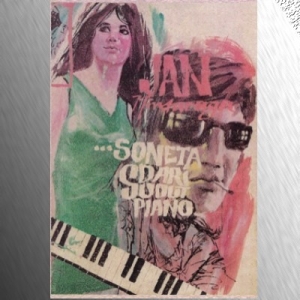 Sonny, a pianist who plays in a restaurant, is asked by Ivonne to give a private lesson to Johanna, her step-daughter. Ivonne is married to Sjam, an old millionaire. It turns out that Johanna, even though she has talent, does not like studying under Sonny, because of her bad relationship with Ivonne. She says that Ivonne is very popular among bad youngsters, and more important, she says, Ivonne, her father’s former secretary, was the cause of her mother’s death. These problems with the troubled Johanna, his conflict with Ivonne, who he accuses of selling herself to Johanna’s father, who underestimates him as well, make Sonny want to quit. But Ivonne, who is apparently unhappy in the house, wants to get revenge for Sonny’s insulting accusation.. Meanwhile, Sonny, with his personal approach, tries to get Johanna’s spirit back, not only by the choice of repertoire, but also by sharing his own life story, that his choice of profession as a singer-pianist had been quite some struggle, because his father insisted that he become an engineer. At the time, after the difficulties with his study, Sonny split with his parents, because he wanted to follow his heart and play piano. This helps Johanna want to continue her piano lessons, and they become closer. Ivonne tries to seduce Sonny, but Sonny is in love with Johanna. One day, there is news that Sjam has died of a heart attack, but Johanna says this was because her father heard the gossip that Ivonne having affair with Sonny. While Ivonne fights to claim Sjam’s wealth, Sonny finally succeeds in his study, and asks Johanna to go with him to his parents’ house to celebrate. H
Sonny, a pianist who plays in a restaurant, is asked by Ivonne to give a private lesson to Johanna, her step-daughter. Ivonne is married to Sjam, an old millionaire. It turns out that Johanna, even though she has talent, does not like studying under Sonny, because of her bad relationship with Ivonne. She says that Ivonne is very popular among bad youngsters, and more important, she says, Ivonne, her father’s former secretary, was the cause of her mother’s death. These problems with the troubled Johanna, his conflict with Ivonne, who he accuses of selling herself to Johanna’s father, who underestimates him as well, make Sonny want to quit. But Ivonne, who is apparently unhappy in the house, wants to get revenge for Sonny’s insulting accusation.. Meanwhile, Sonny, with his personal approach, tries to get Johanna’s spirit back, not only by the choice of repertoire, but also by sharing his own life story, that his choice of profession as a singer-pianist had been quite some struggle, because his father insisted that he become an engineer. At the time, after the difficulties with his study, Sonny split with his parents, because he wanted to follow his heart and play piano. This helps Johanna want to continue her piano lessons, and they become closer. Ivonne tries to seduce Sonny, but Sonny is in love with Johanna. One day, there is news that Sjam has died of a heart attack, but Johanna says this was because her father heard the gossip that Ivonne having affair with Sonny. While Ivonne fights to claim Sjam’s wealth, Sonny finally succeeds in his study, and asks Johanna to go with him to his parents’ house to celebrate. H
Sets: A small bar, but an empty small bar, like the sign of a struggle to find company that will only end in vain. The scenery of Jakarta in the night, the exterior of modern luxurious houses, the interior design with modern taste that matches the fashion style of the characters. Then, dark alleys for bad things like the beating of Sonny, the source of debate about whether it was a set up.
Story-enablers: Two similar flashbacks, from Sonny and Johanna, are related to the piano. Sonny had no choice except to study engineering and play music at the same time; Johanna did not want to continue her piano lessons before met Sonny, because she did not like to learn the classics. These flashbacks make the reader able to track the theme, which is about the search for an identity.
Theme-markers: Ivonne is positioned as the fatalistic woman, who with all the unhappiness of her marriage to Sjam, is the intruder in Sonny-Johanna’s relationship. The social position as the bad woman makes her character even more lively. This kind of character, in conflict with Johanna or Sonny, escalates the tension.
Emotional-foci: From the bad relationship between step-mother and step-daughter to becoming competitors for Sonny’s heart should the emotional one, even the plot unfortunately does not go that way.
Signification: The quite realistic urban love story, that to find happiness there should be struggle and sacrifice, moves to a happy ending for Sonny-Johanna, but quite a bitter one for Ivonne. Sonny’s accusation of Ivonne could demonstrate a moral standard showing the ideology of what is good, and the dominant discourse; or the moral ethics of the status quo being questioned at a time when the urban environment and society are rapidly changing.
23. Telur Di Ujung Tanduk (Egg Crowning A Horn) (159/1969)
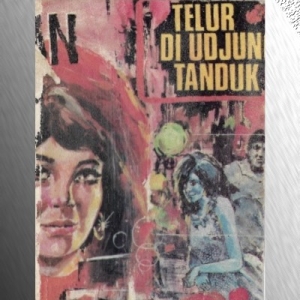 Gatot is staying with his parents’ best friend in Jakarta during his study. He thought that Lucky, the only daughter of the family, would be living in the house, but he meets Lucky’s cousin Tina instead. Then, in the middle of the night, he hears and sees Lucky play the piano. It appears that Lucky has a sickness that makes her unable to go to school or leave the house. Also she must not get emotional. That is why Lucky’s parents keep her at a distance from the world outside, and ask Tina to accompany Gatot. In a way, there are hidden rivalries between Tina and Lucky, but Gatot stays with Tina. However, this makes Lucky’s parents worry more, and ask Gatot’s parents to help them. Gatot’s parents ask Gatot to come home, which only succeeds after they send a letter saying that his mother is ill. When Gatot arrives, he find that his mother is fine. They want to match Gatot to Elly, his high school sweetheart, but this is postponed until Gatot returns to Jakarta. It is too late. Waiting for Gatot who promised to come back after four days is too hard for Lucky’s condition. When Gatot arrives at the house he cannot find Lucky,who has already passed away. It turns out that this entire story is actually a flashback, after Gatot saw a woman identical to Lucky. It turns out that Lucky had a twin-sister, and Lucky was not her mother’s daughter. Twenty-years earlier, her mother’s baby had died at the hospital, at the same time that another mother gave birth to twin girls. She asked to be given one of the twins, and that was Lucky. When Gatot saw someone that he thought was Lucky at the start of the story, that was actually Mira, her twin sister. Mira’s life is the opposite of Lucky’s. After her mother died, she was free to have a singing career, but her family is poor, while her father is a drunkard. This story finishes with an open ending. Lucky’s mother confesses in front of Mira, who Gatot brings to the house to show how identical Mira and Lucky are.Mira and Gatot now have a relationship. O
Gatot is staying with his parents’ best friend in Jakarta during his study. He thought that Lucky, the only daughter of the family, would be living in the house, but he meets Lucky’s cousin Tina instead. Then, in the middle of the night, he hears and sees Lucky play the piano. It appears that Lucky has a sickness that makes her unable to go to school or leave the house. Also she must not get emotional. That is why Lucky’s parents keep her at a distance from the world outside, and ask Tina to accompany Gatot. In a way, there are hidden rivalries between Tina and Lucky, but Gatot stays with Tina. However, this makes Lucky’s parents worry more, and ask Gatot’s parents to help them. Gatot’s parents ask Gatot to come home, which only succeeds after they send a letter saying that his mother is ill. When Gatot arrives, he find that his mother is fine. They want to match Gatot to Elly, his high school sweetheart, but this is postponed until Gatot returns to Jakarta. It is too late. Waiting for Gatot who promised to come back after four days is too hard for Lucky’s condition. When Gatot arrives at the house he cannot find Lucky,who has already passed away. It turns out that this entire story is actually a flashback, after Gatot saw a woman identical to Lucky. It turns out that Lucky had a twin-sister, and Lucky was not her mother’s daughter. Twenty-years earlier, her mother’s baby had died at the hospital, at the same time that another mother gave birth to twin girls. She asked to be given one of the twins, and that was Lucky. When Gatot saw someone that he thought was Lucky at the start of the story, that was actually Mira, her twin sister. Mira’s life is the opposite of Lucky’s. After her mother died, she was free to have a singing career, but her family is poor, while her father is a drunkard. This story finishes with an open ending. Lucky’s mother confesses in front of Mira, who Gatot brings to the house to show how identical Mira and Lucky are.Mira and Gatot now have a relationship. O
Sets: From the open spaces to the interiors, from public space to private, everything reflects the style of modernity. In the loner mood, the other side of a modern city, the back side space, is displayed too. The opposite of an urban space, the countryside scenery, is the place for young couple to go.
Story-enablers: Most of the story is the flash back, so when coming back to the twin sister, the present that should feel like a continuation, feels like a new start, only that Lucky is replaced by Mira. Fortunately, this is the open end. There is the traditional value of destiny challenged by the struggle to fight destiny.
Theme-markers: The markers are the parents’ opinion that their children may not marry anybody they love. Perhaps that from the older generation may also mean something?
Emotional-foci: At the end, these parents cannot do anything with their children’s spirit of love.
Signification: The role of parents shows the power behind the plot. Unfortunately, it is the parent factor that determines the unhappiness of their child. It is important to notice whether there are any struggles or resistance of the youth to the dominant power, to reach the love dream of their life.
24. Tembok (The Wall) – No. 1 (64/1969) / Tembok (The Wall)– the serial in 16 parts (1970/1971) – still to be continued.
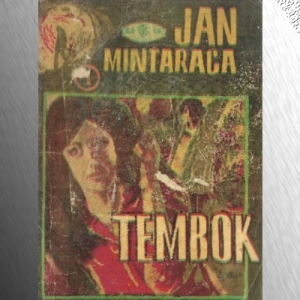
These two corpus form a continuation plot. The first starts with a situation in the luxurious house of the Burhan family, where the first son, Hendra, because of a long sickness, cannot take the annual exam at high school, so he has to repeat the same class, and is now together with Fajar his younger brother who had been in the grade below. The opening scene shows how Burhan pressed Hendra to study hard, which is kind of strange for Hendra because his sickness was not his fault. Even so, Hendra promises he will study hard to catch up. Then, when Judi, his best friend, takes him to a classical music concert that night, he meets a girl who happens to sit beside him. Coming back late, his father complains that once again Hendra went out without his permission. Meanwhile, Fajar has still not yet come home. As Fajar arrives they argue, with Burhan always, as Hendra thinks, taking Fajar’s side. On the first day at school, he bumps into the girl from the concert, and their books fall. As they get to know each other, it turns out they are in the same class. Her name is Meta. When Pak Anwar, the teacher, opens the class, Fajar reminds him that there is a veteran in the class. Meta and Hendra walk together after school and Hendra stays for a while as Meta introduces him to her mother. Then, at home, Hendra fights with Fajar over his humiliation that morning, which ends with Hendra hiting Fajar after the latter says that he is a drifter. At that moment Burhan intervenes. (TO BE CONTINUED).
The second part starts with a continuation of the fight. Again, Hendra thinks that Burhan is taking Fajar’s side, and he feels this is not fair. But then he lets it go, and finds peace every time he meets Meta. Then the Arifin family arrive back from their years of staying in The United States of America, with their daughter, Peggy, who is in a way quite Americanized. The two families seems to be very close and try to get closer with a marriage of Peggy and Fajar. It turns out that Peggy is attracted to Hendra, and she aggressively tries to attract him, which on some occasions makes Meta jealous; but obviously makes Fajar even more jealous. At Fajar’s birthday party,, Peggy comes into Hendra’s room and in a way seduces him. That is when Fajar opens the door and sees what Peggy is doing. Anyway, his anger is addressed to Hendra, just as he promised. When Hendra and Peggy come out, Fajar announces to the party guests that a drifter is trying to snatch away his fiancée. When Hendra asks again what he just said, Fajar says that Hendra is actually an adopted child, which affects Hendra as a very bad psychological experience. Hendra then repeatedly hits Fajar, and leaves followed by Peggy. While wandering on the street at night, Hendra is picked up by Peggy who already knew Hendra’s status in the family, and told him about it, because she thought it is no use to keep it as a secret. Yes, he was adopted before the Burhan family had any children, and when Burhan want to give him back to the orphanage after Fajar was born, Arifin forbade him. Hendra feels maybe he is only a bastard child. After that, while in the car Hendra challenges Peggy to speed up, which Peggy does to lighten Hendra’s burden. But in the middle of the road Hendra jumps, like an act of suicide. However, he still alive and Peggy brings him to her home, the Arifin family house. As the matter becomes more serious, Arifin has the idea of calling Burhan, but Peggy sees Hendra disappearing from the room. With the scars in his heart, Hendra walks again out into the night. He cannot think clearly, and again tries to commit suicide give by jumping in front of a speeding truck. Once again he lives. He wakes in the truck driver’s modest home. In the house, there is Niah, their daughter. She hears and sees everything without Hendra knowing, that the young man only wants to leave and Pak Parta, the truck driver, lets him. So Hendra leaves, even does not know where to go without any money. Inside a bus, he cannot pay the ticket and nearly has a fight with the conductor, but Niah appears and pays for Hendra. They go back to her parents’ house, and for the next few days Hendra stays there. One day he replaces Pak Parta to drive a truck at the port. The truck is hit by another truck which leads to a fight between Hendra and Bonar, the other truck driver. After Hendra takes Bonar down, all the truck drivers crowd around to hit him hard until he is unconscious. He wakes up at Pak Parta’s house again, taken care of by Niah who heard him talk in sleep and mention the name Meta. They became closer, until one day they hug each other. Hendra feels guilty and thinks this is not right, but Niah says that she loves him. (TO BE CONTINUED). Notes: Open ending (O).
Sets: The sets in the first part are all the interiors and exteriors of rich family homes, the school, the concert hall, where the main characters, Meta and Hendra meet. This is true of the empty streets in the housing complex as well. All the designs of the interiors and exteriors are modern, one of them explicitly mentioned. In the first part, these kind of sets become the representation of the haves, the young generation of the social elite which possesses all the up to date styles of the time. In the second part, the poor neighborhood surroundings and the hard situation at the port, represent the have-nots who are familiar with violence outdoors, while inside there are only concerned about themselves, the youth and the poor in the urban city.
Story-enablers: For the whole story the first part is just like an introduction, or an opening, so that the enabler can be found only in the second part, like when Meta sees Hendra dropped by Peggy. Meta’s jealousy escalates some tension.
Theme-markers: This part happens when Fajar reveals the fact about Hendra in front of the crowd, which flares up Hendra’s anger so that he hits Fajar and goes away from the house. After that, the moments escalate higher and higher with Hendra’s two attempts of suicide.

The dominant standard values do not give him any space to be exist.
Emotional-foci: After a quiet moments in the parts at Pak Parta’s house, and a glimpse of violence with truck drivers, Hendra and Niah have difficult romantic scenes, especially when at the last panel Niah confesses what she feels for Hendra.
Signification: The title Tembok or The Wall reflects the idea that there is a wall in Hendra’s heart and mind which makes life for him like living in a cage, which is the world where the dominant standard values do not give him any space to be exist. The fact that this abstract standard creates sort of social rites and gestures in the plot marginalizes the main character Hendra, to the point that he wants to take himself out of the world, as though there are no better alternatives in this world. However, it seems as though Hendra begins to learn that there does exist another world, which apparently is the low class society where Pak Parta’s family accommodates him without expectation of future reward.
25. Antara Dua Eva (Between Two Eves) (161/1970)
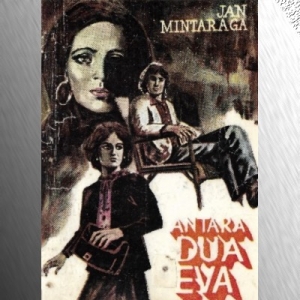 Tria, a dropout, comes from Malang to find work. Then he finds a band in a night club, where he meets Vonny, the young wife of the owner, and also Milly, a teenager who is going out with Aries, who his sister, Henny, had been close before Tria intruded. The topic is always that Tria does not have a job. So Tria then works at Milly’s father office. However, he also has a relationship with Vonny. In the end, when finally Tria chooses to be with Milly, Vonny finds her way to die. This is the cause of the tears on Tria’s eyes on the day of his wedding to Milly, which Milly thinks are tears of happiness. UH/H
Tria, a dropout, comes from Malang to find work. Then he finds a band in a night club, where he meets Vonny, the young wife of the owner, and also Milly, a teenager who is going out with Aries, who his sister, Henny, had been close before Tria intruded. The topic is always that Tria does not have a job. So Tria then works at Milly’s father office. However, he also has a relationship with Vonny. In the end, when finally Tria chooses to be with Milly, Vonny finds her way to die. This is the cause of the tears on Tria’s eyes on the day of his wedding to Milly, which Milly thinks are tears of happiness. UH/H
Sets: The urban environment without crowds in the exteriors, the modern designs of the interiors, young people meeting in public spaces, whereas in the houses there are always parents, who decide and determine everything. The high class spaces are contrasted with the low class, in Jakarta or Malang. There are also Tria’s rented room, ruins and dark alleys behind the metropolis where Tria has to be by himself when facing the odds, and his uncle and aunt’s house in Malang.
Story-enablers: The flashback is the relationship of Tria and Henny, which reveals the jobless Tria. This fact is a matter of prestige which haunts him in his relationships with Vonny and Milly.
Theme-markers: When Tria’s relationship with Milly is in crisis, because the beatings by Aries’s gang, he relies on Vonny to stay with him. Which one does he really love? For Tria, the fact that Vonny is older and is someone’s wife is a moral problem, while Vonny thinks they can manage that. But Vonny is too attractive for Tria to deny. The ambiguity between Milly and Vonny escalates the tension.
Emotional-foci: Despite her social status, Vonny is really in love with Tria. This tragedy, and the fate that follows, steal the drama, and give meanings to Tria and Milly’s romance.
Signification: Regarding the dilemma of a man caught between two women, the moral considerations show the dominant values, or ideologies, in play. Also the marginal position of the jobless Tria, who is never accepted, shows the establishment’s hegemony, which works for the subordinated group as well—like the dialogues with his uncle about social destiny. Even so, Tria fights this, despite sacrificing Vonny’s life.
26. Kelana (Wanderer) (224/1970)
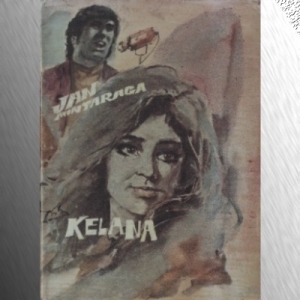 Roelly wants to be a musician. So, despite his father’s prohibition, he goes to Jakarta, leaving his girlfriend Maya. But he finds out that to go just like that also means he has to struggle for survival with his guitar as a street singer. However, one day he finds his luck, when Hilda, a music producer’s daughter, gives him a chance to record his voice. After this success follows, and Roelly’s busy schedule makes it difficult for him to contact Maya. Anyway, knowing his success, Maya comes to Jakarta as a surprise, only to find that Roelly is very close to Hilda. After going back to her town, Maya marries Arman, a long time admirer, so when Roelly finds out the news from his hometown from Ari, his sister, his heart is broken. Affected by this, Hilda struggles to keep Roelly’s career on track. After ups and downs, including the fact that when Maya moves to Jakarta she often meets Roelly who always waits for her in a restaurant, Roelly decides to marry Hilda. H
Roelly wants to be a musician. So, despite his father’s prohibition, he goes to Jakarta, leaving his girlfriend Maya. But he finds out that to go just like that also means he has to struggle for survival with his guitar as a street singer. However, one day he finds his luck, when Hilda, a music producer’s daughter, gives him a chance to record his voice. After this success follows, and Roelly’s busy schedule makes it difficult for him to contact Maya. Anyway, knowing his success, Maya comes to Jakarta as a surprise, only to find that Roelly is very close to Hilda. After going back to her town, Maya marries Arman, a long time admirer, so when Roelly finds out the news from his hometown from Ari, his sister, his heart is broken. Affected by this, Hilda struggles to keep Roelly’s career on track. After ups and downs, including the fact that when Maya moves to Jakarta she often meets Roelly who always waits for her in a restaurant, Roelly decides to marry Hilda. H
Sets: The depiction of the urban environment is quite balanced, even the stall on the street is the place where Hilda find Roellys. The room Roelly rents, the gloomy alley, and in contrast the world of a successful artist, whose performance reaches overseas.
Story-enablers: The tension gets higher when Roelly really wants to go back to his hometown, especially to meet Maya, but Hilda asks him to postpone it until his overseas tour is over.
Theme-markers: Maya is already married, but Roelly cannot deny his love for her, yet Hilda still takes care and manages him.
Emotional-foci: After feeling so down because of Maya, finally Roelly makes an announcement that Hilda will be his future bride.
Signification: The urban dream is a promise of success. In this title the success has to be paid for by sacrificing one’s true love, and in reality the story of success is not always sweet. This title shows the shift from an urban dream to urban reality.
27. Pulang dari Bukit (Back from The Hill) (192/1970).
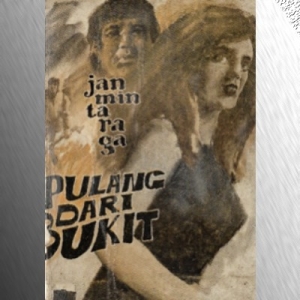 Returning from Holland to their family’s plantation, the young Benny and Inge not only meet their disappointed parents, because they did not finish their study, but also Sanny, a trusted employee, and Dewi, their childhood friend, the daughter of another owner in the neighboring plantation. Pretending to be the heir of the plantation, soon Benny has conflicts with Sanny, who Inge is attracted to. Difficult situations appear when Benny wants to get closer to Dewi, who already had a relationship with Sanny, so that makes the relationship with Inge difficult too. The difficulties are not only about the triangles, and that Sanny is only an employee, but that Sanny himself realizes that he is Benny’s and Inge’s older brother from another mother, whichis a secret. The owner of the plantation actually hides the fact from Sanny, but Sanny already knew from another source a long time ago. Added to this plot is a sublot that Sanny has a conflict with Abas, another employee. One day Abas is killed by a tiger, that is a constant threat to the villagers. They ask Sanny to solve this problem, so Sanny shoots the tiger. But the villagers say that he only killed the female, while there is still the male, wandering and preying on two goats. On the second hunt, Benny who wants to be a hero disturbs Sanny, which makes the tiger could jump on Sanny. It is Benny then, that shoots the tiger, but cannot save Sanny’s life. Before he dies, Sanny uncovers the fact that they are brothers from the same father. Benny walks down the hill with Sanny’s body on his shoulders, not realizing yet that the tiger he killed is a female as well. UH/O
Returning from Holland to their family’s plantation, the young Benny and Inge not only meet their disappointed parents, because they did not finish their study, but also Sanny, a trusted employee, and Dewi, their childhood friend, the daughter of another owner in the neighboring plantation. Pretending to be the heir of the plantation, soon Benny has conflicts with Sanny, who Inge is attracted to. Difficult situations appear when Benny wants to get closer to Dewi, who already had a relationship with Sanny, so that makes the relationship with Inge difficult too. The difficulties are not only about the triangles, and that Sanny is only an employee, but that Sanny himself realizes that he is Benny’s and Inge’s older brother from another mother, whichis a secret. The owner of the plantation actually hides the fact from Sanny, but Sanny already knew from another source a long time ago. Added to this plot is a sublot that Sanny has a conflict with Abas, another employee. One day Abas is killed by a tiger, that is a constant threat to the villagers. They ask Sanny to solve this problem, so Sanny shoots the tiger. But the villagers say that he only killed the female, while there is still the male, wandering and preying on two goats. On the second hunt, Benny who wants to be a hero disturbs Sanny, which makes the tiger could jump on Sanny. It is Benny then, that shoots the tiger, but cannot save Sanny’s life. Before he dies, Sanny uncovers the fact that they are brothers from the same father. Benny walks down the hill with Sanny’s body on his shoulders, not realizing yet that the tiger he killed is a female as well. UH/O
Sets: As the plot entirely in the country, there is no typical urban capitalistic environment of a business district with all the advertising on the stores, except that the place is actually part of the urban space. So, the villa house, the village houses, and even the jungle appear from the urban view, where cars driven by city people to show the distance between places. The interior design of the villa, villagers houses, or Sanny’s room also emphasise the contrast with urban scenery.
Story-enablers: The glimpse of flash back, that Sanny is sent to technical engineering school by Benny’s and Inge’s father for a degree, while Benny and Inge return with a poorly rated credit, sets the contest between the youths before the upcoming scenes.
Theme-markers: At the welcoming party, when Benny is forced to kiss Dewi, while she rejects, and Sanny suddenly appears. Also the contestation of position in the social space after the Abas affair, with personal competition, even though Sanny never had the intention.
Emotional-foci: There are three scenes that are really meaningful to escalate the tension. First, when Sanny reveals his origin to Dewi, with an emotional nuance of his mother’s story; second, the visit of the father to Sanny’s house, not the story he will reveal, makes Inge’s problem just too predictable; third, when Benny hears the fact only seconds before Sanny dies, that make sthe last panel emotionally heavy.
Signification: The open country seems like the opposite of the crowded urban space, but knowing that the city’s space in the other titles is more the ideal dream than the reality, it is possible that the country here is also part of the ideal dream too. So the modern villa in the country is still the center of the urban people’s problem. The open country is just a stage for the urban drama.
28. Lagu yang Terpotong (Broken Song) (254/1970)

After Andar, her artist father, dies because of an accident, Mila, following her father’s will, goes to the country where her aunt lives in a big old classical house near the beach. Her father and her aunt did not get along very well in their younger days, which is why Andar left the house to find his way as an artist. In the country, although her aunt does not like her to paint, Mila still does it on the beach where she meets Leo, another painter from the city. Meanwhile, Mila is already engaged to Edward, a lawyer, the son of her aunt’s adviser, who is also from the city, but Mila never feels that she loves him. Mila gets closer to Leo which leads to a conflict with Edward. On the wedding day, Mila cannot say “I do”, so Edward lets her go, her aunt drives her out, which makes her go back to the city to find Leo, who only heard about the wedding, but not that the wedding ended like that. So, Leo goes on with his career and meets Nina, who really helps him and loves him. After a while, Leo and Nina are ready to marry, when it happens that Mila appears again on the scene, and Leo chooses her. Then, in the news Leo reads about an accident that took Nina’s life. Leo can only could say sorry at Nina’s grave. UH
Sets: The first scene of the urban space is where Andar and Mila work, before Andar is hit by a car. After is the countryside scenery, beaches, a fishing village, and the interior of the old house, which are the meeting places of city people, and people in the middle if necessary like the inn keeper. But after the failed marriage of Mila, everything goes back to the city, with the typical urban dream.
Story-enablers: The story is as though divided in two parts, Mila’s story and Leo’s story. Recalling the first story in the second one every time that Leo thinks of Mila is the enabler, until finally Mila appears in the second part.
Theme-markers: Leo tells Nina about Mila’s return. The tension escalates when Leo says that he should be back with Mila.
Emotional-foci: Feeling Nina with her misery that ends with the accident, escalates the tension higher in Leo’s lamentation of grief at Nina’s grave with a bitter text in the last panel: Goodbye Cruel World!
Signification: This plot can only happen because of the conflict of values that make a woman marry as soon as her age is proper, and the best match is a social-economically established gentleman like a lawyer. As Mila chooses to follow the idealism of love, the plot creates the irony needed, that in the name of love Leo leaves Nina, who is very devoted to him, as well. The conflict of ideologies shows the urban state of development in the action of the characters involved, from conservative to idealistic which ironically preys on a devoted victim.
TO BE CONTINUED
*Seno Gumira Ajidarma. Partikelir di Jakarta.


